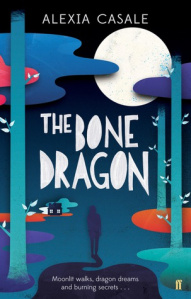 I’m not, as a rule, a huge fan of zombie stories. It’s difficult to have come of age in the early 2000s and not be bored by the walking dead, or The Walking Dead: For a while, it seemed that every damn movie or game was about zombies. But our interest in zombies has waned a bit–The Walking Dead, which will never go off the air if AMC is smart, is one of the last major vestiges of zombies in popular culture that I can think of. (It’s a shame: I find the show to be misanthropic trash, but that’s another discussion for another day.) This is as expected: These things come in cycles. I’ve seen at least two periods of vampire fetishism in my lifetime–Anne Rice and Twilight–and I expect I’ll see more.
I’m not, as a rule, a huge fan of zombie stories. It’s difficult to have come of age in the early 2000s and not be bored by the walking dead, or The Walking Dead: For a while, it seemed that every damn movie or game was about zombies. But our interest in zombies has waned a bit–The Walking Dead, which will never go off the air if AMC is smart, is one of the last major vestiges of zombies in popular culture that I can think of. (It’s a shame: I find the show to be misanthropic trash, but that’s another discussion for another day.) This is as expected: These things come in cycles. I’ve seen at least two periods of vampire fetishism in my lifetime–Anne Rice and Twilight–and I expect I’ll see more.
This is just how things happen. A fresh, new take on a genre appears, people become massively interested in it, works like Shaun of the Dead appear to deconstruct/mock the formula, everything becomes saturated, and we as a society move on. Recently, for my podcast Tuning In, we watched the British series In The Flesh, which was one of the smartest and most oblique takes on the zombie formula that I’ve ever seen. I personally loved it. But I’m not interested in, you know, a gritty take on a bunch of assholes banding together to survive in the face of everything. I’m not interested in the cynical theme that humans are the real monsters. I’m not interested in whatever clever term the work uses instead of “zombies”.
I was into survival horror for a bit when I was in college, in the early 2000s, in the era at the height of zombie fever, which is a funny thing when you consider my aversion to guns. I’m not interested in solving my problems with bullets, and if I don’t have a set of numbers attached to my character that go up at certain intervals, I don’t know how much fun I’m having. I’m not even that into being scared as an emotion–I don’t like to watch horror movies. But I appreciated the likes of the original Silent Hill trilogy for its weirdo storytelling and batshit environments, and I appreciated the puzzle box gameplay of the early Resident Evils. The Spencer Mansion is gigantic knot that you pick apart knot by knot, and your gun is less a channel for visceral violence and more an oddly-shaped key that you can use to open the door that is a zombie in your way. In Resident Evil, you can fuck up: You have such a limited number of resources–you even need to expend a certain resource in order to save your game–that it becomes a very cerebral exercise. The horror, for me, did not come from gigantic ugly creatures shouting “boo” at me. It came from the need to weigh every action, every bullet, and consider whether it could be better spent elsewhere. Resident Evil is called survival horror; it might better be termed economic horror.
That tense guns-or-butter decision making was something I felt while playing The Final Station, which at its face is another zombies-but-we’re-not-calling-them-that game, this time involving a train. You’re a conductor ferrying certain crucial supplies, and the odd survivors you can find, from city to city; periodically, you make stops at various stations and explore the ruins of what’s left of civilization. These segments play relatively traditionally, and are excellently presented in a 2D sidescrolling view–a presentation I normally don’t like!–with areas revealing themselves as you open doors. Sometimes there are not-zombies–they’re drawn in the same diminutive art style as the rest of the cast, but they’re all shadowy, solid black–behind those doors. (Given that American zombie productions often have undertones of a race war, it may or may not be Problematic that you are literally fighting “black people”, but given that The Final Station’s developer is Russian, it’s likely this is a simple stylistic choice. It’s certainly nowhere near as clueless or awkward as Resident Evil 5 was.) You’ve got a limited supply of bullets and med kits, and you’ve got to do your best to avoid using too many of them because you never know when you might really need them. The game is very pretty, it’s got excellent music, it’s atmospheric as hell.
But the game is notable because the action sequences actually become the less tense segments as the game goes on. A few melee whaps and most of the enemies go down, meaning that it’s pretty easy to conserve your bullets for the times you need them, and if you can survive to the end of each level, your character will fully heal himself, meaning you don’t have to use a medkit. And checkpoints are copious in each level–if you die, you don’t lose any significant progress at all. Where the real tension is are in the train sections between levels.
I mentioned rescuing survivors: They fill up the seats in your train, and you drop them off at the major cities that appear between every few levels. They all have health and hunger meters. If the hunger meter goes down to nothing, their health will drop quickly; some of the survivors have bleeding wounds which means they hemorrhage health by the second. Food is a very limited resource which you can only scavenge a little bit of in the levels; medkits can be crafted but are also pretty scarce, and here’s the better use that they can be put to rather than healing yourself. You will lose passengers: You will find yourself in in a situation where you simply have no food or medkits, and they will keel over and die. Worse, the game will subtly make you choose between them. Each passenger gives you a different reward which is listed along with their health/hunger meters–at one point, I let a lady starve to death because all she offered was $20 when another passenger promise $150 and some ammo.
And while this is going on, certain devices on your train will overheat or malfunction, threatening everyone’s life, and God forbid you’ve got to fix something while a particularly lucrative passenger is bleeding to death.
While you’re traveling, and worrying about the welfare of your passengers, they’ll gossip among themselves, spread rumors about what’s going on, talk about the backstory–and this is something you physically cannot read all of: The passengers are in one compartment, with their dialogue presented in little boxes above their heads, and a lot of the things you need to do–fixing the devices, grabbing med kits–is on the other side of the train, meaning that you end up scrolling the passengers off the screen. And so you only end up getting bits and pieces of the conversation–you miss much of it. This puts the backstory in the “scraps of information” category, and every player will get a slightly different experience of it. It’s certainly possible to get a pretty good idea of what’s going on–of why there are Infected people running around trying to kill you, of what the governmental structure of the world is, of the philosophical state of things–but it’s just a sketch.
That’s par for the course with a zombie story. The reason for the dead rising is often pretty irrelevant, and anyway, the people who are capable of figuring it out are often either dead themselves or unable to communicate with the rest of the world because infrastructure has crumbled. What’s more important is how humanity reacts to this threat–the kinds of communities that form from it. It’s easy to put zombie stories into a very conservative theme–that only your little tribe is the good guys, that everybody else is a bunch of bandits that are looking to smash your paradise and let the chaos of the world in, that society is a thin veneer and that we’re incapable of banding together in the face of a larger threat, that we’ve just got to horde our guns because when the race war happens, you can only trust your family. The Final Station, conversely, places much of its blame, as far as I can tell, on a ruling elite interested in screwing over everybody else for its own benefit. That’s a theme I feel more comfortable with–while it’s no less cynical, it fits closer to my own worldview. After all, I’m much more afraid of the President than I am of black people.
Advertisements Share this:




